Need for organizations to be innovative is a critical requirement for organic growth. Organizations can run innovation programmes the same way they run their factories – with inputs, transformation processes and desired outputs. Of course there would be non-financial and financial measurements to verify the effectiveness of the innovation programme. Innovation no doubt is risky but like many other business risk can be quantified, calibrated and managed.
Many organizations think of innovation as limited to products, technology or services which is not the case. Innovation can be extended to other areas of the business such as procurement, supply chain, manufacturing, costing and business models. Innovation also need not be unsettling and big ticket, but can be incremental and less glamorous.
There are several examples of businesses successfully innovating not in product. US retailer Walmart’s claim to success is really their inventory management and Indian e-tailer Flipkart’s innovation is about delivery and payment options.
I don’t have geniuses, can I innovate is a question that haunts many leaders. Such thoughts are dangerous and fatal for creation of innovative organization. Innovation can happen by taking advantage of skills of ordinary knowledge workers. Leadership need to structure, manage, measure and improve innovative processes to produce stream of innovation.
Essentials required for organization to be successfully innovative:
First and foremost requirement for organization to be successfully innovative is inspiring leadership and customer centric approach. Other important aspects to consider would be, purpose, stretched goals, innovation culture and enabling structures, reliable systems and processes.
1. Inspiring Leadership
Inspiring leadership has to set organic growth goals which cannot be achieved without innovation. Leader has to ensure that consumer / customer is keenly observed and listened in the process of innovation. Leader has to tie-up teams across the organization into the innovation path. There has to be a structured mechanism to constantly review and assess the progress of innovation. Small experiments have to be carried out and experiments that fail have to be erased. Leader also has to mould diverse individuals into innovation team. Lastly leaders need to ensure a strong idea pipeline by encouraging idea flow though strong process.
2. Customer-led
Innovation to be successful has to be customer-led. Sales and marketing team has to make extraordinary efforts to constantly know the needs, expectations and desires of their customer- both stated and unstated. The focus should be to know the gaps consumers perceive in the product / service offering and what the customer want and the impact of the offering for the customer. Sales should also find out the reason for customer, many times, not buying their entire requirement from single supplier and why, many times, customer buys the product only first time.
3. Innovation culture
Organizations need to ensure that idea flow is not encouraged only from perceived geniuses within the organization or from R&D team. Idea flow has to be encouraged from ordinary knowledge workers with system of rewards and appreciation. The fear of failure is stumbling block for ordinary worker to participate actively in idea flow and pipeline. Organization culture should be such that fear of failure has to be eliminated. The organization culture should foster curiosity, openness, collaborative work and experimentation. Employees should be trained to become innovators.
4. Enabling structures
There should be a framework in the organization that makes innovation a routine affair. Idea flow can be from internal people or from customers, suppliers, JV partners and other stakeholders. Ideas can be incremental or disruptive. Idea flow has to be perpetual.
5. Short listing ideas for next stage
Ideas selected should have clear linkages to organization revenue and growth goals. The shortlisted ideas should be a mix of incremental and disruptive. The idea pipeline should have ideas, both low and high risk ideas and flowing from internal and external stakeholders. The ideas need to be prototyped passed through stage-gate process and finally tested at customer-end for feedback.
6. Idea ownership
Every idea needs to have an owner who will be responsible to identify the resources, arrange fund, allocate them, pilot the idea through stage-gate process, subject the idea to review, reward success and deal with failures.
7. Go to market
Go to market of an idea does not mean only sales and marketing team would be responsible. Such a step is sure way to kill an idea. Innovation team has to involve the manufacturing, applications and sales and marketing team together at every stage of the process to ensure successful transfer of idea to the customer. To conclude organizations need to understand that innovation is the best form of defence for organizations to maintain consistent growth trajectory. Growth through inorganic acquisitions can at best be short-term defence strategy. Innovation will help organization to enter new markets faster and deeper with better price margins. Innovation puts sales team in offensive mode in the market and provides them an edge against competitors. Lastly there is no choice if organizations don’t innovate. Failure due to non-innovation is a certainty and hence it is every leader’s priority to build an organization that supports and fosters innovation and delivers it.
This article was originally published in Kreston Menon April-June Newsletter.

